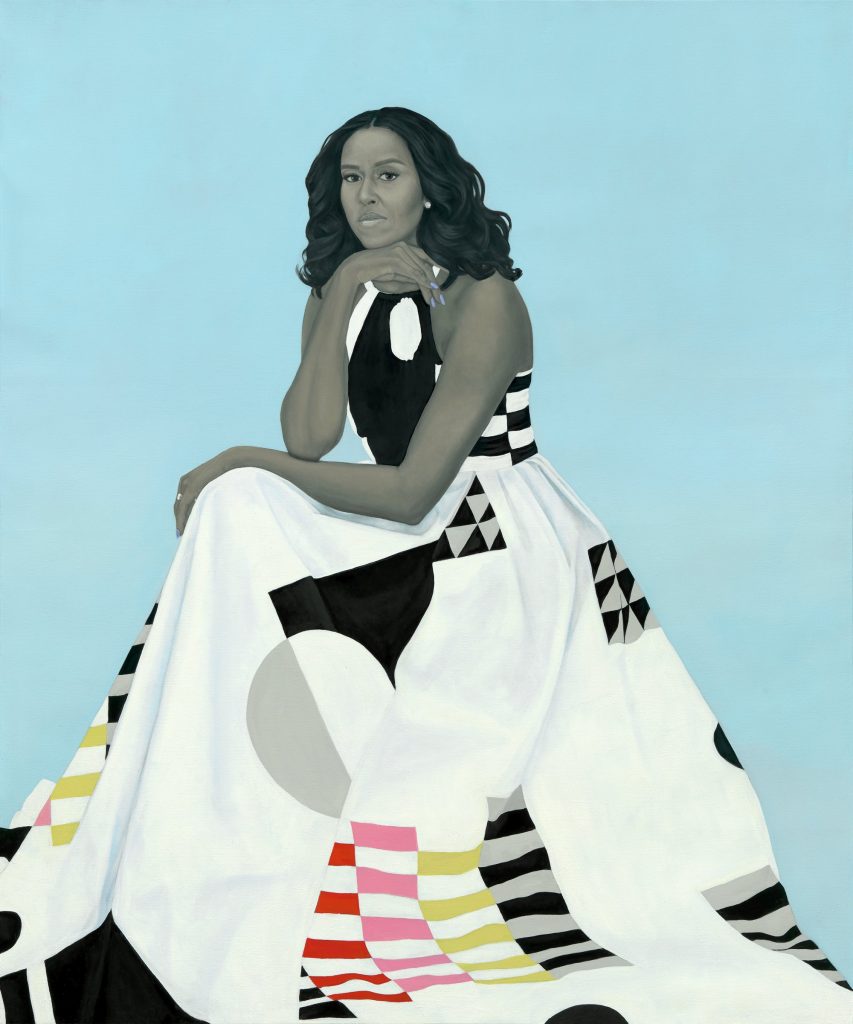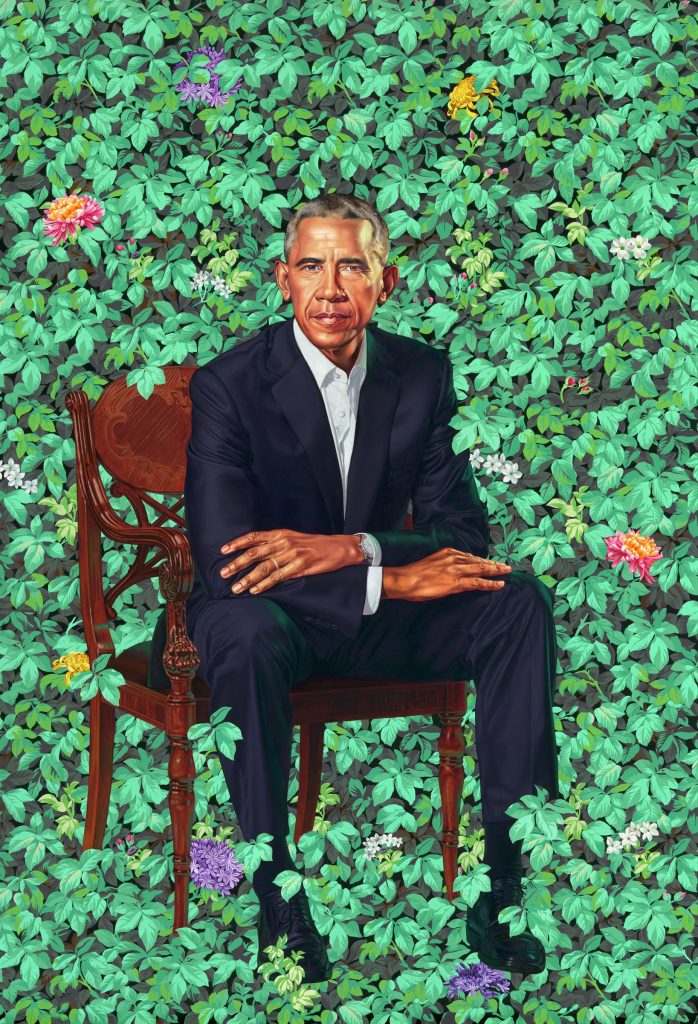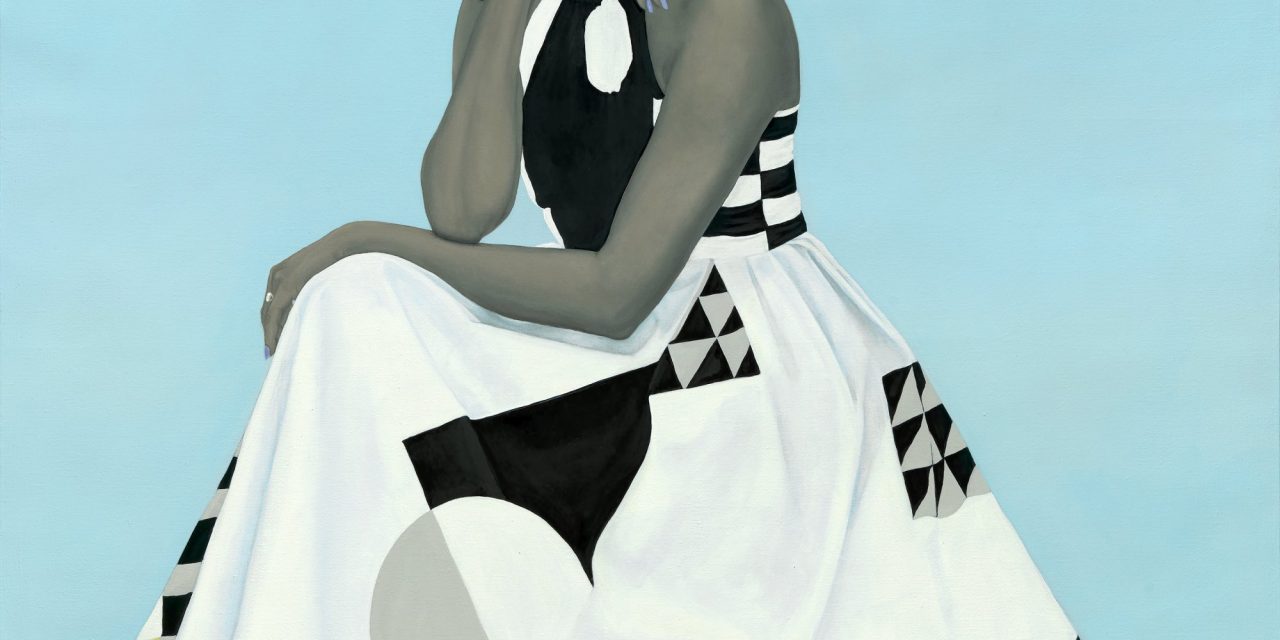Michelle and Barack Obama are undeniably two of the most influential figures of the 21st century, shaping American conversations surrounding politics, race and social justice in our national ideology. Their official White House portraits as president and first lady, which perfectly capture that same remarkable impact and trailblazer status, are on tour around the nation. The tour began in Chicago and will end in Houston, and the portraits are on display in Atlanta’s High Museum of Art until March 20.
There was something undeniably contemporary about this exhibition, thanks to the modern digital-age following of both the artistic portraits and the political figures they represent. As the entrance to the Atlanta exhibition described, the Obamas were not only the first African American family in the White House, they were also the first to connect with the public during the social media age. Their roles as beacons of hope and harbingers of modernity aligned with their introduction of contemporary Black artists like Glenn Ligon and Alma Thomas into the White House collection. It is no surprise then, that the Obamas selected two of the most groundbreaking contemporary Black artists of the decade to paint their portraits: Amy Sherald and Kehinde Wiley.
Sherald, who painted the former first lady, is an iconic American realist painter known for her portraiture, which is based not only on likeness but on the symbolic impact of her sitter. Wiley, who painted Barack Obama’s portrait, is an esteemed portrait painter known for his highly naturalistic renderings of Black subjects. In using elements of European portraiture, Wiley asks the viewer to question the absence of Black figures in the art historical canon.
I was lucky enough to catch the Obama Portraits at the premier showing at the Art Institute Chicago and then again in Atlanta at the High Museum. Both Chicago and Atlanta are not only important centers of Black culture in America, but they are also two cities that are quite special to the Obamas and their portrait artists. The exhibition in Chicago, held in the city where Michelle and Barack Obama met, celebrated this important connection by way of a big map at the entrance to the exhibition that marked locations in the city significant to the Obamas. Similarly, the exhibition in Atlanta emphasized that Sherald was born in Columbus, Georgia and attended college in Atlanta. While I was not able to see these portraits in any other cities, I am sure each location aimed to highlight their stake in and connection to these iconic figures, taking pride in the accomplishments to which these locations may have given root.
The paintings themselves are symbolically sensational and visually magical. Michelle Obama’s portrait reads like a dreamscape, giving rise to a grounded and graceful leader. In that same magnificent sense, Barack Obama’s portrait reads like a luscious, magical realist narrative that reveals a composed and quietly powerful figure. These portraits appear deceptively simple at first glance, but give way to layers of artistic and psychological technique that are beyond literary description.
Michelle Obama’s face balances “strength with vulnerability, authority with humility,” as noted by the gallery label writers, while her undeniable vigor and brilliance shine from within. She is portrayed with Sherald’s quintessential gray-scaled skin tone, a unifying characteristic in all of Sherald’s works intended to emphasize and critique conceptions of racial difference. Sherald is very intentional in carefully selecting the specific background color of her portraits; in this instance it is described as an “ethereal blue,” emphasizing the former first lady’s timeless influence on the world.

Michelle LaVaughn Robinson Obama, Amy Sherald (Courtesy of The High Museum of Art)
While Michelle Obama takes on the status of an elegant and empowering symbol in her portrait, it is interesting to note that Barack Obama’s portrait deals with his status differently. His portrait pose was captured in a moment of relaxation during his photo shoot with Wiley, yet he sits on a stately carved chair with enlarged, authoritative hands crossed on his lap. He is simultaneously a compelling, confident commander and an accessible, approachable man. The verdant background is eye-catching to say the least, but it is the details within the greenery that bring the background, quite literally, to life. The flowers painted by Wiley represent Kenya, Hawaii and Chicago, tracking Obama’s presence on the Earth. These flower symbols at large align with ideas of “blooming possibility and gentle masculinity,” which the gallery text felt were important attributes of Obama’s presidency. This is a new approach to power, incomparable to the likes of George Washington’s Lansdowne portrait, which relies on neoclassical references of democratic dominance alone.

Barack Obama, Kehinde Wiley (Courtesy of The High Museum of Art)
In terms of the exhibition quality, I was intrigued to see that the Chicago exhibit displayed both portraits next to each other, on an elevated white platform, whereas the Atlanta exhibition displayed each on darkly painted walls in separate rooms and placed lower to the ground, almost at eye-level with the viewer. The latter exhibition design removed a certain royal or stately status that was strongly felt in Chicago, instead emphasizing a sense of proximity and accessibility. Interestingly, I cannot tell you which of these choices was arbitrarily “better,” as the Obamas undeniably embody both the extraordinary and the relatable, but it was quite a notable difference.
The separation of the portraits in Atlanta also lets the style and background of the two artists shine individually, allowing viewers to embrace the richness of these idiosyncratic portraits separately. In this differentiated exhibition style, it is critical to note that Michelle Obama’s portrait was displayed first, with it being the first room in the galleries that one enters. Unfortunately, this may have caused some visitors to rush past in order to spend more time in the second room with Barack Obama’s portrait instead, but I also felt that it let her importance and impact stand independently of her husband.
As Wiley so eloquently explained, these portraits are “ … dealing not only with the idea of power in a portrait but the literal power in a portrait.” It is nearly impossible to capture the brilliance of this type of portraiture through any words or photographs, so I encourage everyone to try to experience these portraits for themselves at the High Museum of Art before they leave Mar. 20, 2022. The Obama Portraits exhibition uses only two paintings to address a myriad of concepts relating to power and personhood, extending beyond the frames of those two images and into the people, lives and ideas they represent.
Zimra Chickering (24C) is a born and raised Chicagoan who studies art history and nutrition science. She is also a student docent for the Michael C. Carlos Museum, Woodruff JEDI Fellow, educational committee chair for Slow Food Emory, and Xocolatl: Small Batch Chocolate employee. Zimra loves cooking, visiting art museums, photography, doing Muay Thai, drinking coffee, and grocery shopping. She uses writing as an outlet to reflect upon issues and oppurtunities within artistic institutions, and the unique ways in which food and art can act as communicators of culture.







